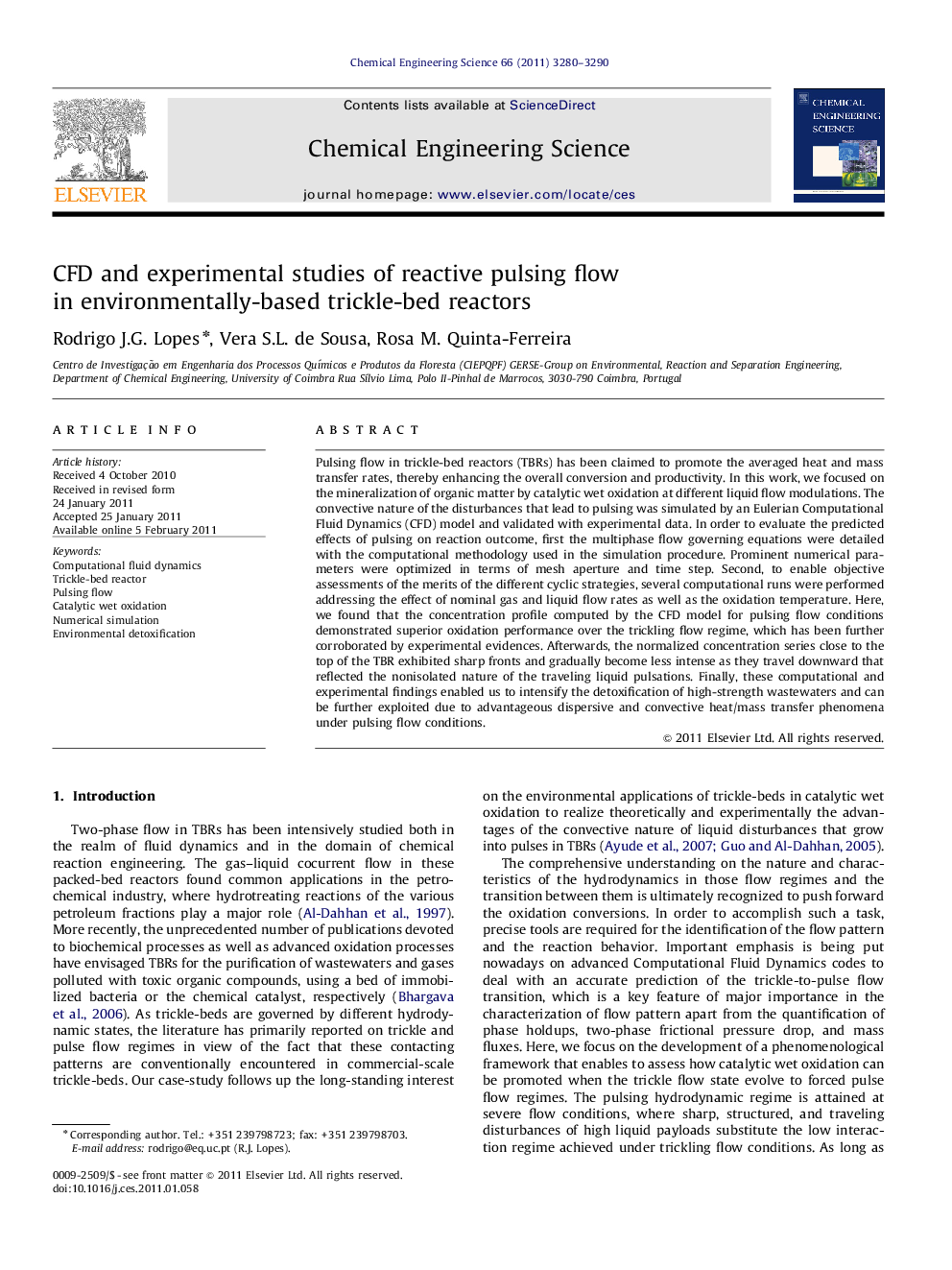| Article ID | Journal | Published Year | Pages | File Type |
|---|---|---|---|---|
| 156417 | Chemical Engineering Science | 2011 | 11 Pages |
Pulsing flow in trickle-bed reactors (TBRs) has been claimed to promote the averaged heat and mass transfer rates, thereby enhancing the overall conversion and productivity. In this work, we focused on the mineralization of organic matter by catalytic wet oxidation at different liquid flow modulations. The convective nature of the disturbances that lead to pulsing was simulated by an Eulerian Computational Fluid Dynamics (CFD) model and validated with experimental data. In order to evaluate the predicted effects of pulsing on reaction outcome, first the multiphase flow governing equations were detailed with the computational methodology used in the simulation procedure. Prominent numerical parameters were optimized in terms of mesh aperture and time step. Second, to enable objective assessments of the merits of the different cyclic strategies, several computational runs were performed addressing the effect of nominal gas and liquid flow rates as well as the oxidation temperature. Here, we found that the concentration profile computed by the CFD model for pulsing flow conditions demonstrated superior oxidation performance over the trickling flow regime, which has been further corroborated by experimental evidences. Afterwards, the normalized concentration series close to the top of the TBR exhibited sharp fronts and gradually become less intense as they travel downward that reflected the nonisolated nature of the traveling liquid pulsations. Finally, these computational and experimental findings enabled us to intensify the detoxification of high-strength wastewaters and can be further exploited due to advantageous dispersive and convective heat/mass transfer phenomena under pulsing flow conditions.
